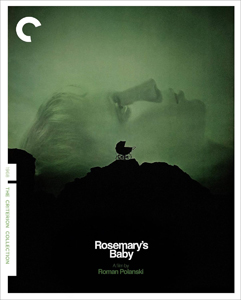The term wasn’t popularized at the time, but “Rosemary’s Baby” (1968) is a master class in gaslighting. In her sympathetic breakthrough role, Mia Farrow’s title character takes us through what we gradually realize is neighbors, doctors and possibly her own husband (John Cassavetes’ Guy Woodhouse) trying to make her think everything is fine while having secret motivations for her unborn child.
Gaslighting 101
Some viewers in 1968 perhaps wondered for a while if Rosemary is sane or paranoid. But when watched today – with knowledge of all the religious horror films that have come since, plus recent illumination of the art of gaslighting — it’s clear Rosemary is the increasingly isolated victim.
The cult in the apartment building – led by Roman and Minnie Castavet (Sidney Blackmer and Ruth Gordon) in Apartment 7A, which neighbors the Woodhouses’ 7E – clearly has evil Satanic aims, while Guy’s position in the plot has an air of mystery.

“Rosemary’s Baby” (1968)
Director: Roman Polanski
Writers: Roman Polanski (screenplay), Ira Levin (novel)
Stars: Mia Farrow, John Cassavetes, Ruth Gordon
Regardless of a viewer’s advanced knowledge or of their ability to read the gaslighting signals, “Rosemary’s Baby” tightens its grip as it goes along. Writer-director Roman Polanski adapts Ira Levin’s popular novel from a year prior without urgency out of the gate, so a viewer has to initially be willing to soak up a mood.
A sort of lullaby plays over aerial panning shots showing the grand old NYC apartment building the Woodhouses are moving into. It’s a magnificent setting; I love how apartments have been carved out of once-larger apartments. The walls are thin, and we see nooks, crannies and odd passages into neighboring units. Today’s TV series “Only Murders in the Building” was perhaps inspired by this architecture.
The nosy Castavets have dashes of annoyance and amusing charm, but their ward Terry (Victoria Vetri) will at least be a good friend to Rosemary … until something goes wrong. (Terry’s backstory will be explored in the prequel “Apartment 7A,” which premieres Sept. 27 on Paramount Plus.)
Cult appeal
The idea of a Satanic cult has had the biggest impact on future horror stories – with Rosemary’s “dream” of all the old, naked people chanting repurposed in “Midsommar” (2019) – but the film’s modern relevance especially comes from the cult’s gaslighting.
Rosemary often feels she has one person on her side – Terry, Guy, or the good Dr. Hill (Charles Grodin) — even if the majority of the people in her life are sketchy. She’s not stupid – as was my vague idea from my previous viewing – she is just a naturally trusting soul who is extremely outnumbered. Gaslighting as a pre-meditated plot by a large group can be very effective, and almost unbeatable once the target is totally without allies. As such, Polanski crafts an entirely believable movie about a Satanic cult, and makes a viewer reflect on how many asylum inmates have been stashed there for other people’s good, not their own.

The length (2 hours, 17 minutes) is part of why we end up feeling so much for Rosemary, although I’d still argue the film is overlong, since the story is very simple. The great acting is why I don’t begrudge the length too much. And Polanski’s classic seems downright efficient compared to the bizarre decision to make a 4-hour TV miniseries version in 2014.
As with most horror hits, “Rosemary’s Baby” has had continuations. The TV sequel “Look What Happened to Rosemary’s Baby” (1976) was poorly reviewed and is hard to find; and Levin later contradicted that timeline with his sequel novel, “Son of Rosemary” (1997). Even if merely mediocre, “Apartment 7A” looks to be the most notable further adventure in the “Rosemary”-verse.
The movie’s biggest impact on Hollywood is how it paved the way for “The Exorcist,” “The Wicker Man” and “The Omen” – with a nod to the religious undertone of “Carrie” – in the 1970s. The most timeless element of “Rosemary’s Baby” when viewed today, though, is a pitch-perfect portrayal of the art of gaslighting. Beware thy neighbor.

